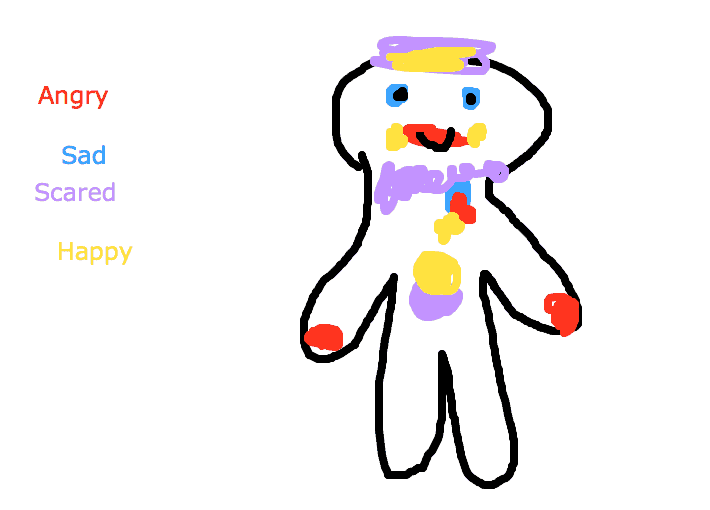Hi third graders! Today, we are going to develop a deeper understanding of how our emotions work. What are some of the most common emotions? What causes them? What is our body trying to tell us? Are there ways to recognize these feelings in others and help them cope? Are these emotions bad? How can we find ways to control them, instead of letting them control us?


Left: https://unsplash.com/photos/6bKDcZNaDTI
Right: https://unsplash.com/photos/v3HlPuZ03II
Common Emotions and Coping Skills
| Emotion | Impact and Feeling | Coping Tools |
| Joy | Bubbly, smiling, laughing, light, | Take some time to relax in the Calming Corner if your happy jitters are too distracting to you or your classmates. Dance to get some energy out! |
| Sadness | Tearful, quiet, heavy, | Talk to a friend/ teacher/ parent, write out your feelings, make some art, read poetry, etc. |
| Anger | Tense, frustrated, clenched muscles | Draw a picture of how you feel, relax your muscles, listen to music, vent to a trusted adult |
| Fear | On edge, anxious, concerned, rapid thoughts, | Take a step back from the situation or activity that is causing stress. Ask yourself what is making you stressed, and problem-solve how to make it a more enjoyable and stress-free time |
Recognizing Emotions in Ourselves and Others
Photo Citations, In Order:
https://unsplash.com/photos/sAmwQxM_3FI, https://unsplash.com/photos/cDjVQiBxiMc, https://unsplash.com/photos/R8wDUbD-IkI , https://unsplash.com/photos/vCfxXxbQRX8 ,https://unsplash.com/photos/xxwRujAXctY, https://unsplash.com/photos/gDG8KSwSAvo
How might the people in the above pictures be feeling? Happy? Scared? Worried? Angry? Grumpy? Upset? Silly? Confused? Sad?
How can we tell? What signs are being given through their facial expressions, body language, posture, and eyes?
Does your body react the same when you are feeling like the people above?
Where do YOU feel?

We are going to take some time as a class to draw our own Gingerbread person! Do some reflecting to think about where in your body YOU feel different emotions? Does your tummy hurt? Do you have a headache? Are your cheeks sore from smiling so much? Are your muscles tense?








Nicely done. A thoughtful approach to helping students better understand their emotions. Your approach is multi-layered: guides them through vocabulary, visual cues, even an opportunity to “draw” emotional centers. Well crafted and looks like it would be effective in the classroom.
Hi Rachel, this is a really fun lesson to teach children about emotions – what an important topic! I really like your “Common Emotions and Coping Skills” table that you created, what a super easy way. It is very easy to read and informative. I think this is something that should be talked about more often, especially starting at a younger age.